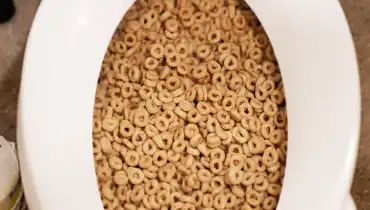Is it Appropriate to Flush Food Down the Toilet?
Is it Appropriate to Flush Food Down the Toilet?
Blog Article
Here below you can get a lot of incredibly good content in regards to Flushing Food Down the Toilet?.

Introduction
Many individuals are often faced with the problem of what to do with food waste, especially when it pertains to leftovers or scraps. One typical concern that occurs is whether it's all right to flush food down the toilet. In this write-up, we'll delve into the reasons why people could think about flushing food, the repercussions of doing so, and different techniques for correct disposal.
Reasons why people might take into consideration flushing food
Lack of awareness
Some people may not understand the possible harm triggered by flushing food down the bathroom. They may wrongly think that it's a safe practice.
Convenience
Flushing food down the commode may seem like a fast and simple option to throwing away undesirable scraps, particularly when there's no nearby garbage can offered.
Negligence
In some cases, individuals may merely select to flush food out of large idleness, without taking into consideration the consequences of their activities.
Consequences of flushing food down the commode
Environmental influence
Food waste that ends up in waterways can contribute to air pollution and injury water environments. Additionally, the water made use of to flush food can strain water sources.
Pipes issues
Purging food can cause clogged up pipelines and drains, causing costly plumbing repair work and troubles.
Sorts of food that must not be purged
Coarse foods
Foods with coarse appearances such as celery or corn husks can obtain tangled in pipelines and cause clogs.
Starchy foods
Starchy foods like pasta and rice can soak up water and swell, leading to obstructions in pipes.
Oils and fats
Greasy foods like bacon or cooking oils must never be flushed down the commode as they can solidify and cause obstructions.
Correct disposal techniques for food waste
Using a waste disposal unit
For homes geared up with garbage disposals, food scraps can be ground up and flushed through the plumbing system. However, not all foods appropriate for disposal in this way.
Recycling
Specific food packaging products can be recycled, minimizing waste and minimizing environmental effect.
Composting
Composting is an eco-friendly means to get rid of food waste. Organic products can be composted and made use of to enhance soil for gardening.
The relevance of appropriate waste monitoring
Minimizing environmental harm
Proper waste management practices, such as composting and recycling, assistance reduce air pollution and protect natural resources for future generations.
Shielding pipes systems
By preventing the technique of flushing food down the commode, property owners can stop expensive pipes repair work and maintain the honesty of their plumbing systems.
Conclusion
Finally, while it may be alluring to purge food down the commode for ease, it is essential to understand the possible effects of this activity. By adopting correct waste monitoring practices and dealing with food waste responsibly, individuals can contribute to healthier pipes systems and a cleaner setting for all.
FLUSH FOOD DOWN THE TOILET?
FLUSHING FOOD CAN CAUSE BLOCKED DRAINS IN YOUR HOME
All of the plumbing fixtures in your home are connected to the same sewer pipe outside of your home. This outdoor sewer pipe is responsible for transporting all the wastewater from your home to the Council sewer mains. Even small pieces of food that go down the kitchen sink can cause problems for your sewer. It should therefore be obvious that flushing larger bits of food, such as meat, risks a clog in either the toilet itself or the sewer pipes. Flushing greasy food is even more problematic because oil coagulates when it cools, coating the interior lining of your pipes.
THE TOILET IS NOT A BIN
Food isn’t the only thing that people shouldn’t be flushing down the toilet. People use the toilet to dispose of all kinds of things such as tampons, makeup wipes, dental floss, kitty litter and even underwear. Water goes to great lengths to educate residents about the high costs and stress placed on wastewater treatment systems simply from people flushing the wrong stuff down the toilet. It costs taxpayers millions of dollars each year, and homeowners thousands in blocked drain repairs.
FLUSHING FOOD IS A WASTE OF WATER
Flushing food is a waste of our most precious resource - water. In June this year Level 1 water restrictions were introduced to protect water supply from drought conditions. Much of New South Wales continues to be affected by prolonged drought with recent figures revealing up to 97 per cent of the state remains in drought. Depending on whether you have a single or dual flush toilet, every single flush uses between five and 11 litres of water. In the current climate this is a huge amount of water to be wasting on flushing food that should be placed in the bin (or better yet, the compost).
https://www.jabplumbingsolutions.com.au/blog/can-you-flush-food-down-the-toilet

Hopefully you enjoyed our section on Think Twice Before Flushing Food Down Your Toilet. Thanks so much for taking the time to read our short article. Do you know about anybody else who is curious about Think Twice Before Flushing Food Down Your Toilet? Why not promote it. We thank you for reading our article about What Can Happen If You Flush Food Down the Toilet?.
Get A Quote Report this page